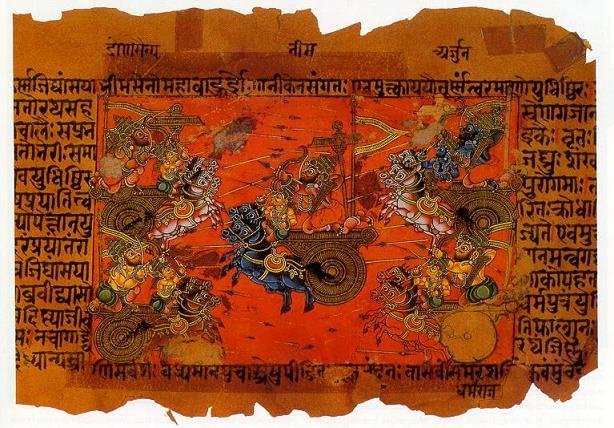I was a bit skeptical about the concept of being able to do this but this series is amazingly well taken. Michael Wood, a veteran presenter and British historian, is wonderful throughout. A witty and articulate he seems to enjoy his task of presenting that makes him a very likable host. In fact he seems to be learning as much as the people this documentary is made for. This makes him very personable.
I have always been very interested in history. I love reading about the rise and fall of great empires such as the Roman Empire but have limited if any knowledge about my own country and ancestors.
This documentary series starts with the first settlers of India. Wood travels to the beautiful backwaters of Kerela and Tamil Nadu to find ancient rituals whose words have possibly been passed down from these settlers from Africa. These rituals and hymns are said to pre-date languages with every hymn being preceeded and ended by sounds that can only be bird songs. I was boggled by the thought of rituals performed more than 5000 years ago still being performed by the descendents of those first settlers.
Mother India, Wood says, is literally that. Every human who is not of African descent can trace their origins from the migration of humans from Africa to India. Amazingly there are still people in villages in the remote parts of Tamil Nadu who have ancient markers in their genes that can be traced to Africans today.
The Indians owe the British a huge debt of gratitude for it was they who promoted the field of archeology in India and discovered the Indus Valley Civilization only in the 19th century! It was the most populous and largest civilization of its time, says Wood. The civilization was huge ... the ancient city of Harrapa apparently had a population of 200,000 people, which would make it a rather decent sized city even by today's standards.
Much of the civilization was discovered by accident. Wikipedia has a very detailed article about the civilization.

Wood attempts to discover why the Indus valley civilization dies out after having thrived for more than a millenium. Weather patterns and the drying up of the lifeline of the civilization (water from rivers), and a weakened monsoon is one theory put forward in the documentary. It is said that the people of the Indus valley civilization move eastwards into the Ganges plain to become simple farmers again.
The advent of the Aryans and the rise of Sanskrit takes centerstage after this. Wood travels to the Asiatic society in Calcutta. Sir William Jones the founder of the Asiatic society believed unlike his contemporaries that India was not a primitive society, says Wood. He persuaded a sanskrit scholar to teach it to him and along the way made some truly ground-breaking discoveries as he translates the Vedas.
In a revolutionary lecture made by Jones, he points out that Sanskrit has many fundamental words in common with Latin and Greek. He believes that the origins of Sanskrit and possibly the basis for the hindu gods could be from outside India.
He goes on a quest to Peshawar to find the origin of Soma - what the ancient vedic scholars called the nectar of the gods (Soma). He finds that it is still served today in Peshawar. He delves further and finds that since horses are not native to India the Aryans may have come from as far as Central asia. A brief visit to Turkmenistan and a perusal of an archaeological find by a Russian archeologist seems to tie the origin of Soma to these parts of the world.
He then moves onto the epic poem Mahabharat and how much of an impact the story has had on all Indian civilizations that followed. Wood states that Indians believe that this poem is the greatest story ever told and that it incorporates every facet of life within. More than just being a story it contains lessons on how to live life.
A picture of a scroll with a painting depicting the Mahabharat
He tracks down an Indian scholar who believes that the story of the Mahabharat may not be all myth. Using data points from the story the scholar unearthed the ancient city of Hastinapura buried in a hill that bear marks of being destroyed by a great flood.
It's bigger than Troy for the sake of comparison says Wood - 700 yards across, possibly a great citadel in its heyday. Pottery, the legend that named the place and the flood believes Wood could indicate that there was more to the Mahabharat than just being a myth.
This first part about 50+ mins long
Wood will next delve into the Alexandrine invasion of the Punjab, the Golden age of the Mauryans and the rise of Buddhism in the next part.






